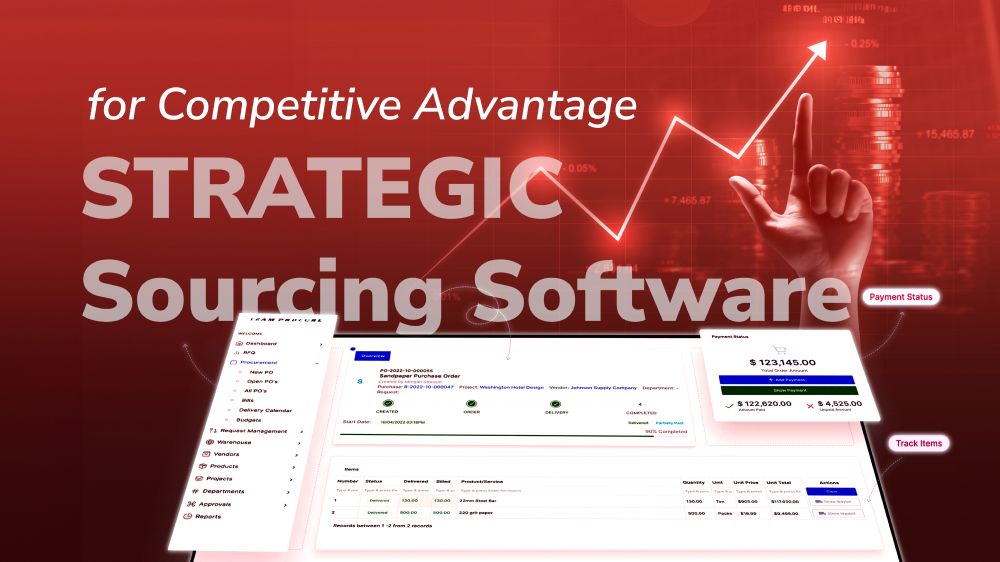Benefits of IT Project Outsourcing & 8 Best Practices to Follow

Content Map
More chaptersOutsourcing has become an increasingly popular option for businesses looking to reduce costs and improve efficiency. When it comes to IT projects, outsourcing can be a great way to get the work done quickly and efficiently and also enjoy various benefits. You need to know and follow a few best practices when outsourcing your IT projects. By following our eight best practices here, you can ensure that your outsourcing strategy is effective and productive. And that is what we are going to lead you through in this article. But first, let’s warm up with some basic information about IT project outsourcing.
What is IT Project Outsourcing?
IT project outsourcing, or simply software development outsourcing is an arrangement in which a business hires another company to complete some IT work. This can include electrical engineering, computer programming, or similar tasks. The outsourcing company generally specializes in certain kinds of projects, allowing for specialization and more efficient work.
Why Outsourcing Software Development Projects?
Running an internal IT department is expensive and complicated. It requires you to recruit staff with specialized skills, equipment, and training just to get the job done. Hiring employees for this work can be prohibitively expensive. Otherwise, outsourcing IT projects means that you pay for only the services you need when you need them, and there is no need to hire or manage a staff of talented workers.
Obviously, outsourcing IT projects offers businesses of all sizes various benefits, but it also comes with some undeniable drawbacks. Accordingly, to leverage IT project outsourcing to the fullest, you must be aware of all the pros and cons of outsourcing software development.
Benefits of IT project outsourcing
As mentioned above, outsourcing your software development projects is beneficial for companies of all sizes. IT project outsourcing can save organizations time and money, freeing up resources to be focused on the business’s main goals. Let’s have a closer look at some benefits of outsourcing software development below:
Cost-efficiency
The single most significant benefit for companies that outsource IT projects is that they can save a lot of money. Hiring an internal IT department usually requires several highly skilled workers, expensive equipment, training, and other expenses. When you outsource your IT needs, you are only responsible for the services performed by the outsourcing company. The only costs involved are the fees for the services, which are usually far lower than what you’d pay if you hired an IT department. For businesses that engage in outsourcing on a regular basis, this can add up to significant savings over time. Projects can be completed for lower budgets since no full-time employees need to be hired and managed.
Focus on Core Competencies
To survive and thrive in the fast-moving business environment as today, you need to be able to stay competitive and keep costs low through innovation and specialization. By outsourcing your IT projects, you can focus on what you do best and leave the rest of the development process to someone who specializes in this area.
Increase Flexibility
A key advantage of outsourcing IT projects is that it offers flexibility. The on-demand nature of outsourced services means that companies can hire more or less as needed. For example, suppose there are many software developments projects you need to get done but not enough internal IT staff for all of them. In that case, you can outsource an extended team that will be able to take on any project your internal team cannot do. In addition, you don’t have to worry about the increased workload or training new employees because an outsourcing company does it all for you. Or, if your company needs additional IT staff temporarily due to an upcoming deadline, outsourcing allows companies with otherwise fully-staffed departments to add workers when required.
Access Highly-trained Professionals
Since an increasing number of businesses are adopting the outsourcing model, the market for qualified experts has grown exponentially. A large talent pool of skilled workers can be found at various IT development service providers who offer outsourcing services at affordable rates and with flexible contracts. When you outsource your IT projects, you gain access to highly-skilled software developers who are fully trained in the latest technologies and methodologies. This enables them to stay up-to-date with changes in modern development practices. Outsourcing is also considered a method to solve problems related to the shortage of software engineers.
Best Practices for an Effective IT Project Outsourcing Strategy
When your technology is holding your business back from achieving its potential, it’s time to consider outsourcing. The key point to successful IT project outsourcing is to have a strategy. Let’s take these best practices as a reference to build up your own outsourcing strategy:
Identify & Set Common Incentives Before You Begin Your Project
Both the client and the partner should be clear on their expected deliverables and what they will receive in return. This is an important component of an effective outsourcing agreement that ensures both parties are committed, on the same page, and incentivized to succeed. The team leaders, project managers, and IT team all must have a shared vision for how things will unfold. The project managers must be clear about the responsibilities, deliverables, and objectives of the project. This shared vision then will cascade down to the individual members of the team who are responsible for completing various tasks on time with outstanding results.
Build a Strong Relationship with Your IT Service Provider
A strong relationship with your outsourcing partner will provide many benefits, including trust, flexibility, and alignment. Before choosing an outsourcing service provider, it is essential to ask the right questions regarding their project management approach, their work with clients, and their company culture.
Establish Clear Lines of Communication Between Outsourced Team & In-house Team
When outsourcing IT projects, there needs to be a dedicated system in place for precise and constant communication, both at the top level as well as down to the individual team members. The client must have all the necessary information when they need it. There should be a clear understanding of how project updates and feedback will be shared with in-house teams to avoid confusion about priorities or goals. Outsourced team members should receive access to the right information and resources to do their jobs effectively. This includes company policies, project schedules, job roles and responsibilities, internal procedures and forms used by the business, as well as other relevant information.
Establishing clear lines of communication can help with any potential miscommunication between parties involved with an IT project. It also will reduce the chances of a partner delivering poor quality work or being out of touch with business priorities.
Ensure Team Members Have What They Need to Make it Work
If you’re outsourcing IT projects, make sure the vendor has the resources and equipment needed to complete your work on time and successfully. This ensures that you’ll receive a project whose results are worth their asking price.
Plan on Ongoing Quality Assurance
With any outsourced project, you should plan on ongoing quality assurance. This means that the project manager and top-level management must go above what would usually be expected. Make sure to visit the team working on your project and provide them with concise feedback every step of the way, primarily if they’re located in a different time zone.
Allow for Flexibility & Responsiveness
As business needs evolve, your agreement should be flexible enough to support these changes in alignment with the original intent of the agreement. While you may set out to do a specific task in a specific way, surprises might happen along the way that could open up possibilities for you to consider. Flexibility will help mitigate any potential roadblocks that could arise unexpectedly, allowing for a smoother transition and a more effective relationship with your IT services partner.
Be Ready to Collaborate & Problem Solve
Effective outsourcing requires a high level of collaboration between the client and service provider. You must be prepared to work together as a team on the goals and expectations that were set forth in your agreement. As with any successful partnership, proactive problem-solving is a valuable skill to have as you work through the obstacles along the way.
Ensure You Have Systematic Processes for Change
As projects progress, changes will inevitably arise. Make sure you have a systematic process in place to ensure the project not only remains on track but corrects itself as needed. With IT project outsourcing, flexibility is key, and any team willing to take this into account will experience long-term success.
In brief, following these best practices will help you make the most of your IT project outsourcing and allow you to fully realize the benefits that can be achieved through this strategic partnership with a software outsourcing company.
Conclusion

Overall, we have given you an overview of IT project outsourcing as well as its benefits. In the end, outsourcing is a time-tested and reliable way to get your IT project off the ground. With careful planning and execution, you can ensure that all of its aspects are taken care of with minimal risk for failure or disappointment. In addition, we have identified eight best practices that will help to ensure you get the most out of your outsourcing agreement. There is no magic formula, but implementing these guidelines will allow both parties to enjoy success and leverage the benefits of IT project outsourcing better.







